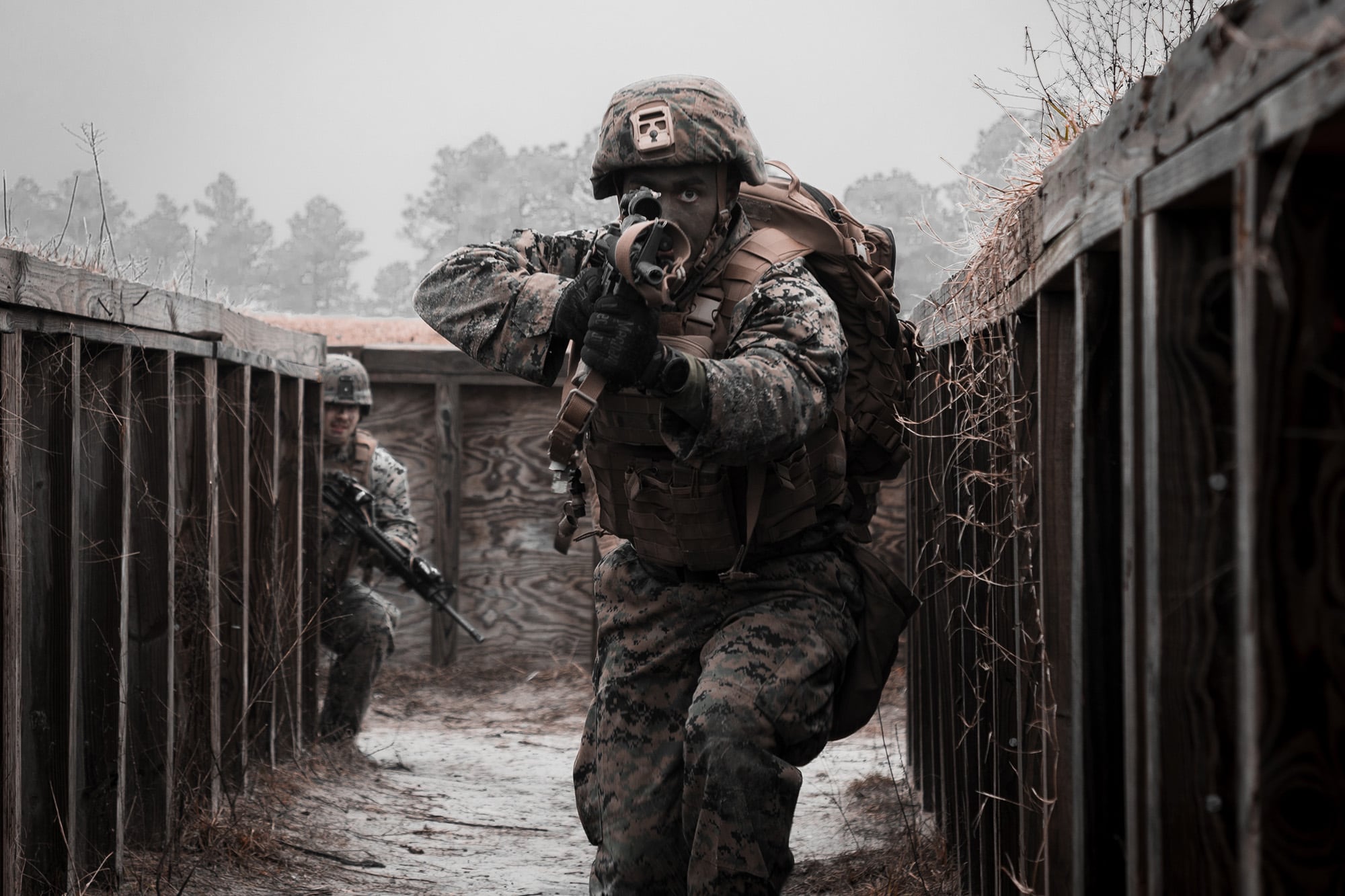Every time Marines head to the field they’ll have a chance to experiment with how the force will fight future battles.
That’s in part because Marine Corps Commandant Gen. David Berger has set down a strict deadline of 2023 for Marines to offer a new way of operating in the increasingly challenging areas against peer adversaries such as Russia and China.
As a guide, Marines will look to a recently published “Tentative Manual for Expeditionary Advanced Base Operations,” or EABO. The concept puts Marines in small teams focused on sea denial to help the Navy fight a peer adversary.
RELATED

Broad strokes of what’s next for the Corps were laid out in a call Thursday with media, Lt. Gen. Eric Smith, deputy commandant of Combat Development and Integration, along with Col. Tony Henderson, director of Concepts and Plans for the Marine Corps Warfighting Lab.
The manual is labeled “tentative” on purpose and remains agnostic on both technologies and the geographic area where the new concept will be employed.
That’s because although the threat that’s keeping all of the services marching forward is China, the Marines want EABO to be tailorable to other adversaries and areas.
Smith emphasized that the Marine Corps would be an “EABO-capable” force, not an “EABO force.”
The manual was released in February, first to Fleet Marine Forces to get initial feedback, Smith said. But how the concept evolves in the coming years will incorporate input from Marines, civilians in academia and at think tanks, a variety of sources.
Ultimately, what’s called a tentative manual will become official doctrine and how Marines fight, similar to work more than 70 years ago that established how Marines would conduct modern amphibious landings.
But much, much faster.
Henderson noted that it took 15 years for the pre-World War II Marine Corps to go from initial concepts to a capable wartime landing force.
Berger wants applicable results in less than three years, though both noted that technologies, formations and operations would continue to change as the Corps looks to a fully capable force in 2030.
Smith said the deadline is helpful because it is causing a sense of urgency, which is needed as pacing threats such as China continue to advance their own capabilities.
“And frankly, our wargaming and analysis showed we can provide an Initial Operational Capability in 2023,” Smith said.
Some of the changes are already underway, Berger cut tanks and reduced conventional artillery in 2020, moving resources, both funding and manpower, toward future capabilities.
In the artillery example, Smith noted that the core work ― fires ― remained the same, only the tools have improved.
He pointed to experiments Marines are doing with the remotely operated ground unit expeditionary, or ROGUE fires vehicle. The system is a joint light tactical vehicle armed with a naval strike missile is a longer-range precision fire.
The Marines that will run that system are essentially artillery Marines with a different system to operate, he said.
And the Corps already has begun building a new formation, the Marine littoral regiment that is built for littoral operations with a combat team, anti-air battalion and logistics battalion.
Todd South has written about crime, courts, government and the military for multiple publications since 2004 and was named a 2014 Pulitzer finalist for a co-written project on witness intimidation. Todd is a Marine veteran of the Iraq War.





